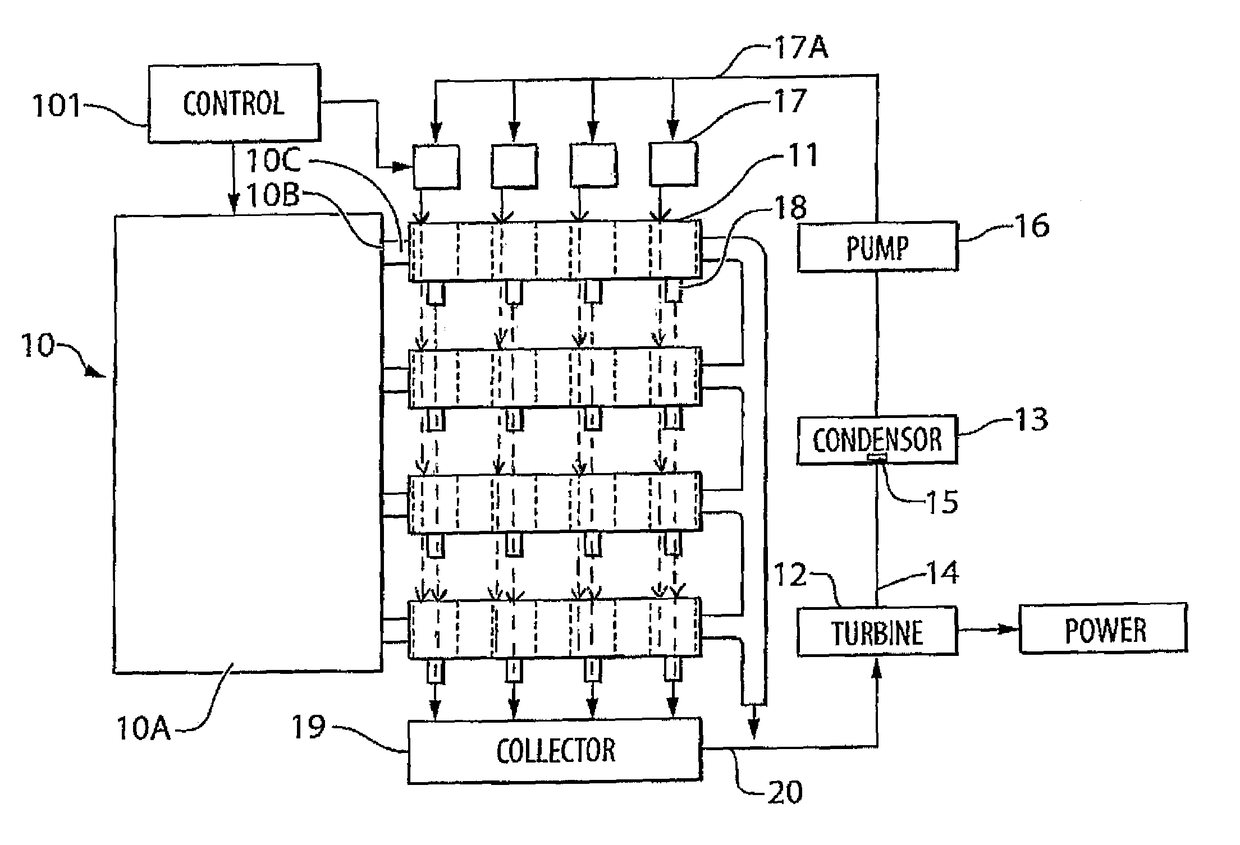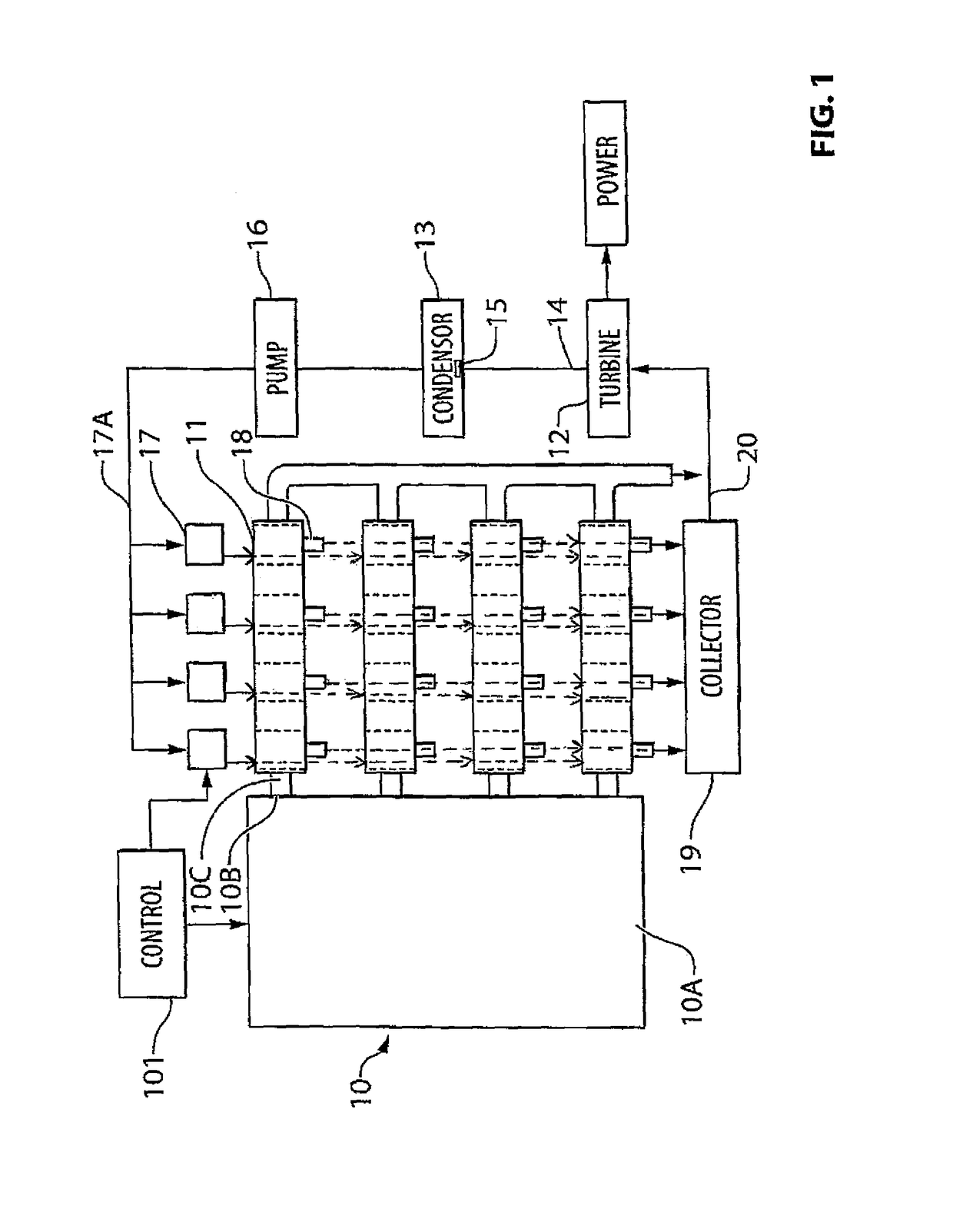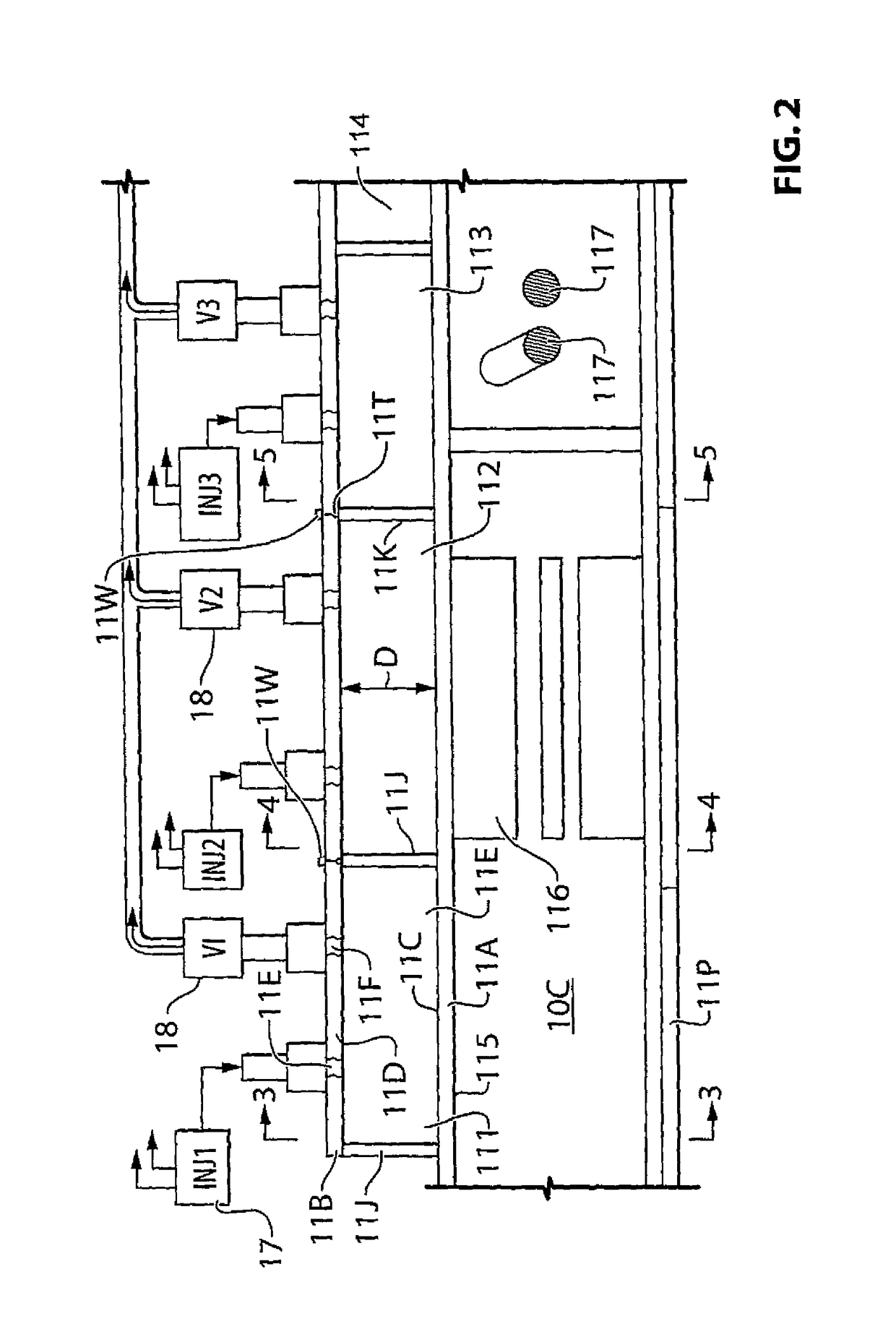Method of steam generation by spraying water onto a duct within a chamber having divider walls
a technology of dividing wall and duct, which is applied in the direction of indirect heat exchangers, machines/engines, light and heating apparatus, etc., can solve the problems of difficult heat exchanger provision, and achieve the effect of plentiful and inexpensive sources of energy
- Summary
- Abstract
- Description
- Claims
- Application Information
AI Technical Summary
Benefits of technology
Problems solved by technology
Method used
Image
Examples
Embodiment Construction
[0079]As shown in the Figures there is provided an apparatus and method for evaporating a liquid to generate a pressurized vapor. This comprises a heat source 10 in the form of an engine 10A with exhaust ports 10B feeding exhaust ducts 10C.
[0080]At each duct 10C is provided a series of vaporization cells or cores 11 developing steam for a turbine 12 driven by the vapor generated by the cell 11, a return tank 13 for the condensing vapor, a return pipe 14 to carry the steam from the outlet of the turbine which includes a diffuser 15 and a pump 16 to transfer the liquid back to the cell through injectors 17 through lines 17A.
[0081]Each cell 11 includes walls defining two spaced surfaces 11C, 11D with an open chamber 11E therebetween with the surfaces located on the inside of walls 11A and 11B.
[0082]The walls 11A is in communication with a source of heat from the exhaust 10B within the duct 10C sufficient to maintain the surfaces at a temperature such that the liquid injected by injecto...
PUM
| Property | Measurement | Unit |
|---|---|---|
| pressure | aaaaa | aaaaa |
| pressure | aaaaa | aaaaa |
| operating pressure | aaaaa | aaaaa |
Abstract
Description
Claims
Application Information
 Login to View More
Login to View More - R&D
- Intellectual Property
- Life Sciences
- Materials
- Tech Scout
- Unparalleled Data Quality
- Higher Quality Content
- 60% Fewer Hallucinations
Browse by: Latest US Patents, China's latest patents, Technical Efficacy Thesaurus, Application Domain, Technology Topic, Popular Technical Reports.
© 2025 PatSnap. All rights reserved.Legal|Privacy policy|Modern Slavery Act Transparency Statement|Sitemap|About US| Contact US: help@patsnap.com



